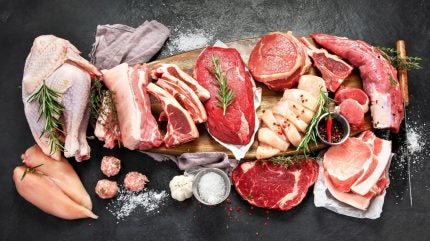
Global meat prices have risen to an all-time high led by import demand for beef and lamb from the US and China, according to the United Nations (UN).
Meat and vegetable oil prices helped drive up the Food and Agriculture Organization of the United Nation’s index tracking five food commodities to the highest level since February 2023.

Discover B2B Marketing That Performs
Combine business intelligence and editorial excellence to reach engaged professionals across 36 leading media platforms.
The FAO Food Price Index averaged 130.1 points in July, up 1.6% from June. It rose 7.6% from the same month in 2024 but was 18.8% below the all-time peak reached in March 2022.
Meanwhile, the FAO Meat Price Index averaged 127.3 points, up 1.2% from June and the highest in at least 35 years. It was up 6% from July 2024.
The FAO attributed the rise in the meat-price index primarily to increased prices for bovine and ovine meat (beef/veal and poultry).
“Global bovine meat prices reached a new record high, supported by higher quotations in Australia, underpinned by strong import demand, particularly from China and the United States of America, which outpaced available export supplies. Robust global demand also contributed to firmer prices in Brazil,” the FAO said.
Poultry meat prices also saw an increase, following Brazil’s regaining of its avian influenza-free status.

US Tariffs are shifting - will you react or anticipate?
Don’t let policy changes catch you off guard. Stay proactive with real-time data and expert analysis.
By GlobalDataConversely, pig meat prices declined due to “ample” supplies and reduced demand, particularly in the EU.
The FAO Vegetable Oil Price Index rose to 166.8 points in July, a 7.1% increase from June, reaching a three-year high.
It was driven by higher quotations for palm, soy, and sunflower oils.
Palm oil prices rose on “robust global demand and improved competitiveness”, while soy oil was buoyed by expectations of firm biofuel sector demand in the Americas, the US agency said.
The price increases in meat and vegetable oils were offset by declines in cereal, dairy and sugar.
The FAO Cereal Price Index decreased by 0.8% to 106.5 points, with declining wheat and sorghum prices outweighing increases in maize and barley.
Fresh seasonal wheat harvests in the northern hemisphere applied downward pressure, the FAO said, adding that adverse conditions for spring wheat in parts of northern America provided some support.
The FAO Dairy Price Index edged down for the first time since April 2024, by 0.1% to 155.3 points. However, it was up almost 22% from July last year.
Prices of butter and milk powder prices decreased. But cheese prices continued to rise, partly driven by demand in Asia, as well as the lower export availability in the EU.
Falling for a fifth consecutive month, the FAO Sugar Price Index averaged 103.3 points, down 0.2% from the previous month.
The FAO said that the expectations of a global production recovery in 2025/26, notably in India, and Thailand, weighed on prices, although signs of a rebound in global sugar imports moderated the decline.





